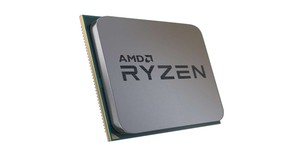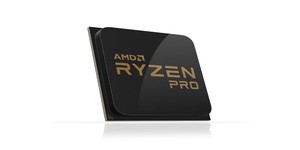AMD's AGESA 1.0.0.6 adds Ryzen RAM tweaks, PCI-E virtualisation
May 26, 2017 | 10:37
Companies: #amd

AMD has announced an impending microcode update for its Ryzen processors which boosts virtualisation capabilities while also allowing manual configuration of 26 additional dynamic RAM (DRAM) parameters to allow modules to be run outside of JEDEC specification.
Currently under testing and due for release in mid to late June, with a handful of boards already benefiting from a beta firmware update, AMD Generic Encapsulated Software Architecture (AGESA) build 1.0.0.6 brings claimed improvements to the memory subsystem. 'AGESA 1.0.0.6 officially adds 26 new parameters that can improve the compatibility and reliability of DRAM, especially for memory that does not follow the industry-standard JEDEC specifications e.g. faster than 2667, manual overclocking, or XMP2 profiles,' explains AMD's Robert Hallock in a blog post announcing the new build. 'Keeping in mind that this is overclocking territory, manual or automated control of these parameters should nevertheless make it a little more straightforward to use DDR4-3200 modules - or faster if you have the talent!'
The new settings include additional dividers for memory clocks up to DDR4-4000 without the need to change the system's reference clock, manual configuration of 1T or 2T command rates, row cycle time, CAS write latency, write recovery time, and the voltage fed to the DDR4 PHY on the Ryzen chip itself. While these settings, and considerably more including a power-saving feature, all form part of the AGESA 1.0.0.6 firmware, it will be up to individual motherboard manufacturers as to how many - or how few - are exposed to end-users.
In the same update, AMD has added a feature which may help drive adoption of Ryzen and other Zen-architecture processors for virtualisation: PCI Express Access Control Services (ACS). 'ACS primarily enables support for manual assignment of PCIe graphics cards within logical containers called "IOMMU groups,"' explains Robert. 'The hardware resources of an IOMMU group can then be dedicated to a virtual machine. This capability is especially useful for users that want 3D-accelerated graphics inside a virtual machine. With ACS support, it is possible to split a 2-GPU system such that a host Linux OS and a Windows VM both have a dedicated graphics cards. The virtual machine can access all the capabilities of the dedicated GPU, and run games inside the virtual machine at near-native performance.'
Those eager to play with the new AGESA release are advised to check for recently released beta firmwares for their motherboards or wait until mid to late June for polished releases.
Currently under testing and due for release in mid to late June, with a handful of boards already benefiting from a beta firmware update, AMD Generic Encapsulated Software Architecture (AGESA) build 1.0.0.6 brings claimed improvements to the memory subsystem. 'AGESA 1.0.0.6 officially adds 26 new parameters that can improve the compatibility and reliability of DRAM, especially for memory that does not follow the industry-standard JEDEC specifications e.g. faster than 2667, manual overclocking, or XMP2 profiles,' explains AMD's Robert Hallock in a blog post announcing the new build. 'Keeping in mind that this is overclocking territory, manual or automated control of these parameters should nevertheless make it a little more straightforward to use DDR4-3200 modules - or faster if you have the talent!'
The new settings include additional dividers for memory clocks up to DDR4-4000 without the need to change the system's reference clock, manual configuration of 1T or 2T command rates, row cycle time, CAS write latency, write recovery time, and the voltage fed to the DDR4 PHY on the Ryzen chip itself. While these settings, and considerably more including a power-saving feature, all form part of the AGESA 1.0.0.6 firmware, it will be up to individual motherboard manufacturers as to how many - or how few - are exposed to end-users.
In the same update, AMD has added a feature which may help drive adoption of Ryzen and other Zen-architecture processors for virtualisation: PCI Express Access Control Services (ACS). 'ACS primarily enables support for manual assignment of PCIe graphics cards within logical containers called "IOMMU groups,"' explains Robert. 'The hardware resources of an IOMMU group can then be dedicated to a virtual machine. This capability is especially useful for users that want 3D-accelerated graphics inside a virtual machine. With ACS support, it is possible to split a 2-GPU system such that a host Linux OS and a Windows VM both have a dedicated graphics cards. The virtual machine can access all the capabilities of the dedicated GPU, and run games inside the virtual machine at near-native performance.'
Those eager to play with the new AGESA release are advised to check for recently released beta firmwares for their motherboards or wait until mid to late June for polished releases.

MSI MPG Velox 100R Chassis Review
October 14 2021 | 15:04








Want to comment? Please log in.